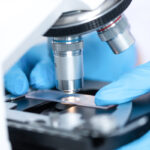Does Hysteroscopy/Laparoscopy Before IVF Increase Success?

Does Hysteroscopy/Laparoscopy Before IVF Increase Success?
- June 25, 2014
- 9:00 am
- Doç. Dr. Serkan ORAL
İçindekiler
ToggleIVF treatment is a difficult and costly process for patients. In order to increase the success of the treatment, it is extremely important to make the necessary preparations beforehand. The patient should be prepared for the treatment correctly. Since IVF is generally accepted as the first treatment method today , the use of laparoscopy and hysteroscopy has decreased. However, this varies according to IVF centers and cases. In the presence of a condition that will prevent pregnancy in the uterine cavity, some centers use the hysteroscopy method. Some centers use the laparoscopy method during the examination of the pelvic region. Since each patient’s condition is different, the decision whether to use these methods is made on an individual basis.
Hysteroscopy
This method is usually applied in the office. It is a very useful diagnostic method in examining the inside of the uterus. At the same time, this method provides information about the endometrium thickness and surface. The alternatives to this diagnostic method are HSG and three-dimensional ultrasonography. However, hysteroscopy is still superior to these methods. Diagnoses made with the hysteroscopy method are very useful in recurrent IVF failures. Because it is known that the intrauterine cavity and pathologies negatively affect the success of IVF treatment. Hysteroscopic surgery of anomalies in the uterus is an element that increases fertility. Using this for problems before IVF will affect the success of the treatment. However, this situation should be monitored individually.
Indications for hysteroscopy before in vitro fertilization treatment
- Among the tests to be performed on couples, examination of the uterine cavity should be a routine examination. The doctor should decide which method should be used for this, depending on the individual.
- If the woman is over 35 years old, has abnormal vaginal bleeding, or if there are suspicious conditions during the examination, intrauterine examination should be performed.
- If the woman has had 2 previous unsuccessful IVF attempts, hysteroscopy should be performed.
- The indications for therapeutic hysteroscopy before IVF treatment are no different from the indications after infertility examinations. Polyps in the uterus should be removed from there, adhesions should be removed. These should be done before IVF treatment.
Laparoscopy
This should be done under general anesthesia and in a hospital environment. There are 2-3% complications in this method, and there is a small risk of death. Therefore, it should not be preferred in cases of diagnostic infertility. Laparoscopy should be used in pelvic area infections, if there is a problem in the tubes in infertility, or if anomalies are detected in HSG. In cases of infertility with an unexplained cause, it is not clear how it will be used. In order to ensure success in IVF treatment, there are indications for laparoscopy to be used for therapeutic purposes. One of these factors is the presence of fluid in the tubes. Laparoscopy is not required routinely in IVF treatment.
What are the indications for laparoscopy before IVF treatment?
- Laparoscopy is not performed in patients who do not show suspicious clinical symptoms, have a normal pelvic appearance, or have infertility of unknown cause.
- Laparoscopy may be performed when there is inflammation of the pelvic area.
- In case of pathological pelvic area, laparoscopy is indicated.





